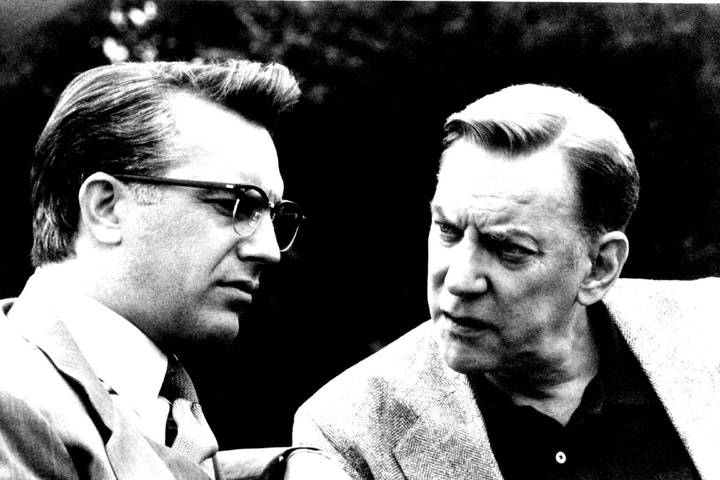By Rick Anderson
For The Daily World
In resuming this monthly column after a shorter-than-anticipated hiatus, I didn’t expect to be discussing Kevin Costner’s connection to Westport. That was because I was unaware that he had any.
But in a interview published in a recent edition of Journey, AAA Washington’s magazine, Costner revealed that he spent part of a summer during the mid-1970s commercial fishing for salmon off the coast of Westport.
Despite starring in a few waterborne films since (the 1995 futuristic drama “Waterworld, the 1999 melodrama “Message in a Bottle” and the 2006 Coast Guard-centric drama “The Guardian”), Costner hasn’t actually made any movies in his old stomping grounds.
Still, Westport might be as good a location as any if someone wanted to put together a Kevin Costner Film Festival.
Ideally, such a festival would depict the highs and lows of Costner’s 30-year film career. He has experienced more of both than most screen legends.
An actor of limited range, Costner frequently has been miscast. But his skills are such that he frequently can elevate the quality of a film in the right role.
If a Kevin Costner Film Festival ever reaches fruition, it could be divided into four categories. Here are my nominees for each category.
Category 1: Good films that Costner made better. Example: “Bull Durham” (1988).
There are several movies that would fit into this category — “Dances With Wolves,” “Field of Dreams,” “No Way Out” and “Open Range,” to name four. I’ve never seen “Waterworld,” but aficionados of the futuristic genre say it was a good movie. More recently, Costner was effective as a supporting character in the impressive historical drama “Hidden Figures.”
I’m selecting “Bull Durham,” because the rollicking baseball comedy contains what is arguably Costner’s best performance. A fine athlete who reportedly hit a couple of legitimate home runs during filming, he was ideally cast as a veteran catcher who tutors a talented but uninhibited pitcher (played by Tim Robbins), whom he also battles for the affection of a groupie played by Susan Sarandon.
Viewed by some as the ultimate baseball movie, it offers a funny but realistic view of life in the minor leagues before running out of steam somewhat in the final 30 minutes.
Category 2: Good films that survived Costner’s (mis)casting. Example: “The Untouchables” (1987).
Playing Eliot Ness in the big-screen reboot of the classic television series, Costner probably was wise in not attempting to channel TV star Robert Stack’s stoic interpretation of the character.
Unfortunately, his version of Ness doesn’t appear to be tough enough to lead a Cub Scout troop, let alone a strike force designed to take down notorious gangster Al Capone (played by Robert De Niro). The scene in which Ness challenges Capone and his murderous henchmen in the lobby of a Chicago hotel is laughingly improbable.
Although it won’t win any awards for historical authenticity, I like the movie regardless. Its chief assets are David Mamet’s entertaining if largely fanciful screenplay, Brian DePalma’s stylish direction and Sean Connery’s Oscar-winning performance as a veteran cop who advises Ness on how to nail Capone “the Chicago way.”
Category 3: Promising films that Costner made worse. Example: “JFK” (1991).
Costner was way out of his league in attempting to portray flamboyant, obsessive New Orleans District Attorney Jim Garrison in director Oliver Stone’s fascinating but flawed look at Garrison’s investigation of John F. Kennedy’s assassination.
In an early scene (set in a New Orleans restaurant) in which his character learns of JFK’s death, Costner not only botches the required accent but displays all the emotional anguish of a customer being denied cocktail sauce for his shrimp.
Too bad, since the film is a technical triumph that raises some intriguing questions about the assassination and features fine supporting performances from the likes of Tommy Lee Jones, Gary Oldman and Joe Pesci. Jones, who played alleged conspirator Clay Shaw, actually would have been the ideal choice for the Garrison role.
Lasting more than three hours, the film finally comes unglued during a seemingly endless closing soliloquy in which Garrison blames everyone short of Mother Teresa — and possibly Lee Harvey Oswald — for Kennedy’s death.
Category 4: Good films in which Costner played dead. Example: “The Big Chill” (1983).
This very entertaining ensemble comedy about the reunion of one-time college campus activists boasts one of the greatest title sequences in cinematic history.
Accompanied by Marvin Gaye’s rendition of “I Heard It Through the Grapevine” and other classics assorted characters react to news of a beloved former classmate’s death. The kicker, for today’s audiences, is that the body of the corpse being dressed for the funeral (his face is never shown) is that of a pre-stardom Costner. Aside from a blink-and-you’ll-miss-it late flashback scene, that is Costner’s only appearance in the film.
He was originally intended for a more substantial flashback role. But writer-director Lawrence Kasdan cut those scenes, believing Costner didn’t project the necessary magnetism for the part.
Costner, however, probably came out ahead on the deal. As a makeup call, Kasdan cast him as a rambunctious cowboy in the 1985 retro Western “Silverado” — a scene-stealing role that helped launch him to stardom.
One significant hole in any film festival would be the lack of Costner’s Academy Award-winning performances. Although he was honored by the Academy for producing and directing “Dances With Wolves,” he has never received an acting Oscar.
Blame that on the significant shortage of epics about commercial fishing off Westport.


